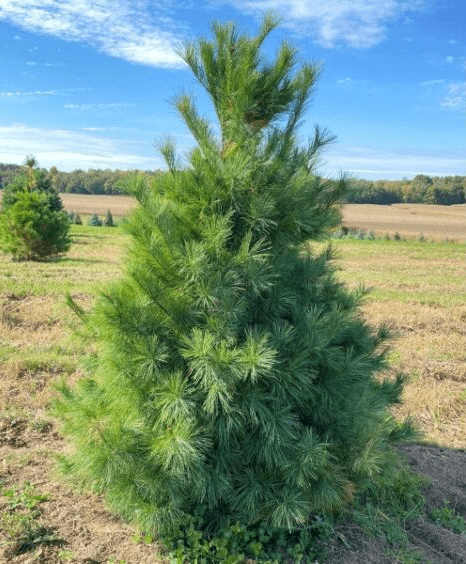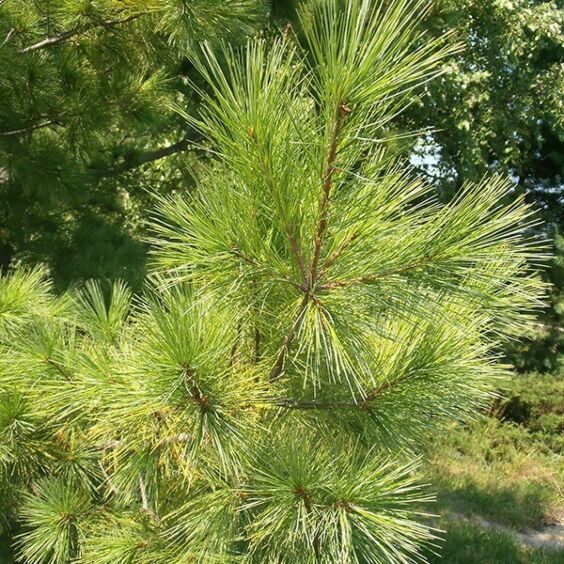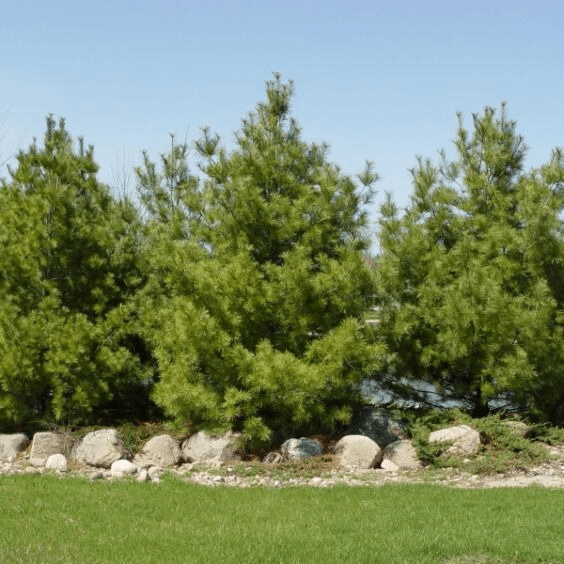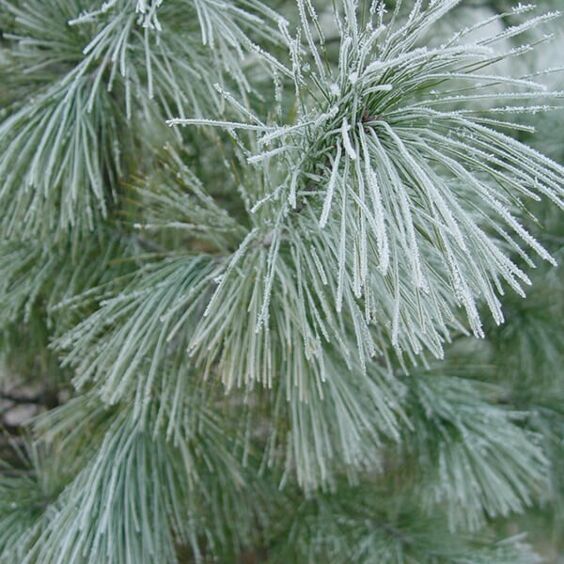The eastern white pine, a towering symbol of North America’s colonial history and natural beauty, holds a significant place in the region’s heritage. Several factors have now put it under threat. How significant is the decline? Can something be done?

When the White Pine was King
The eastern white pine played a crucial role in shaping the history of North America, especially during the colonial era. Its lightweight yet durable wood made it highly sought after for shipbuilding, leading to its nickname “the tree that built America.” This demand drove the early economy and development of regions like New England and Canada.
The abundance and quality of eastern white pine also contributed significantly to the growth of the logging industry. It became a valuable commodity for trade, providing economic opportunities for settlers and indigenous people alike. The timber from these trees was used not only for construction but also for producing furniture, barrels, and paper.

Ecological Significance
Apart from its economic impact, the eastern white pine also held great ecological significance. As one of the tallest trees in eastern North America, it serves as a vital component of diverse forest ecosystems. Its dense foliage provides shelter and nesting sites for various wildlife species while helping to stabilize soil through its extensive root system.
The environment was safe while the white pine was king.

Britain and The White Pine – Two Kings Meet
When European settlers arrived in the New World, vast stands of White Pines greeted them. The old-growth White Pines were remarkable, standing 150 to 200 feet tall and being the largest trees east of the Rockies. It didn’t take long for them to start logging for various uses such as housing and shipbuilding.
By the time the New World was discovered, Europe and especially Britain, was desperately out of resources. There were a few old wood forests left. For centuries prior, trees were cut for expansion efforts and need for farmland.
When the British learned about the size and quantity of “King White Pine” on the other side of the Atlantic, their King, in typical style, moved quickly to procure the best of what was available.
Under British rule in 1691, strict regulations were imposed on these majestic trees. The Massachusetts Bay Charter claimed any tree at least 24 inches in diameter for the British Royal Navy and threatened hefty fines for unauthorized cutting.
The historical exploitation of eastern white pines for various purposes posed a severe threat to their population. The choicest White Pines in New England belonged to the Crown, leading to stringent regulations that significantly impacted their numbers across Pennsylvania and New York State.
The Inevitable Happened
As with any resource that falls into the hand of the short-sighted, eventually the mighty white pines that blanketed the colonies of the New World were harvested. The push into the west, and what some call the great timber rush, took some of the pressure off of the virgin forests in the east. But by this time, the initial demands from Britain and the New World incumbents for white pine had left an indelible mark.
Where are we now?
The Eastern White Pines that survived the initial wave of logging have recently faced a new challenge. Needle blight is a fungal disease that affects the Eastern White Pine, causing the needles to turn brown, wither, and eventually fall off. This can lead to defoliation, which weakens the tree and makes it more susceptible to other threats such as insect infestations and harsh weather conditions.
So, as with so many case studies involving man, disease, and the natural world, the White Pine’s existence for future generations is no guarantee.
Threatened Conservation Status
The Eastern White Pine is currently classified as “Concern” by the IUCN Red List, indicating a threatened conservation status. This designation serves as a reminder that these trees are not completely safe from threats, despite their remarkable resilience in the face of challenges like needle blight. It’s important for conservation efforts to continue in order to protect and preserve these iconic trees for future generations.
What is being done to save the eastern white pine?
Commendably conservation efforts in many areas where “the king” once ruled are being developed by actors in the private and public sector. Let’s take Ontario as a case study.

Preservation Efforts – Focus Ontario
In the 1990s, significant steps were taken to safeguard the remaining old growth white pine forests located on public lands. This conservation initiative was marked by the establishment of Provincial Parks and Conservation Reserves, providing protection to these vital ecosystems.
In 1999, Ontario’s protected areas system saw substantial growth. Over 370 new conservation sites were established, with many situated in the southern regions of the province, encompassing precious pine forests such as the Algoma Highlands, Lower Spanish Forest, and Kawartha Highlands.
The Forest Accord, also signed in 1999, signified a collective commitment by the Ontario government, the forest industry, and the environmental community to complete the parks and conservation reserves system, particularly in areas where significant features like old growth pine remain unprotected.
In 1995, the Ontario government responded to the Old Growth Forest Advisory Committee and a legal order under the Environmental Assessment Act by crafting a comprehensive Conservation Strategy for Red and White Pine Forest Ecosystems in Ontario. The primary goal of this strategy is to ensure the continued presence of red and white pine forest ecosystems, including old growth stands, across Ontario’s landscape. This objective is pursued while allowing for a sustainable harvest of red and white pine.
To guide forest managers, specific directives have been outlined. These include ensuring that the area of red and white pine in forest management units does not decrease below current levels, establishing targets for restoring these pine species based on historical records, protecting at least one old growth red and white pine ecosystem in each site district over the long term, and considering the age class distribution in forest management units.
Moreover, silvicultural prescriptions are to be tailored to stand and site conditions, emphasizing the retention of old growth structural characteristics in pre-harvest silvicultural plans. Where possible, techniques promoting the natural regeneration of red and white pine are preferred, although artificial regeneration methods may be employed to restore these species to their native habitats.
It’s worth noting that some of the most exemplary white and red pine forests in southern and central Ontario now thrive on private lands. Agencies such as Ontario Parks, The Nature Conservancy, and the Federation of Ontario Naturalists have actively engaged in acquiring key properties, establishing conservation easements, and forming regional land trusts to protect and preserve these valuable ecosystems.
There is hope for the Eastern White Pine
The story of the eastern white pine is a testament to the delicate balance between human development and nature, highlighting the importance of continued conservation.
The eastern white pine, once a symbol of North America’s colonial history and natural beauty, faces significant challenges today. Its historical significance, from being a vital resource for shipbuilding to its ecological importance in forest ecosystems, cannot be understated.
However, centuries of exploitation, coupled with the recent threat of needle blight, have led to its “Concern” classification on the IUCN Red List.
Despite these challenges, there are ongoing conservation efforts in various regions, such as Ontario, aimed at protecting and preserving this iconic tree species.
Ways to support the comeback
Private sector involvement in supporting the conservation efforts of the Eastern White Pine is crucial for the preservation of this iconic tree species. By actively participating in conservation initiatives, businesses can not only fulfill their corporate social responsibility but also contribute to the protection of a vital component of North America’s natural heritage.
Supporting the conservation of Eastern White Pine forests can enhance a company’s sustainability profile and showcase a commitment to environmental stewardship.
Collaborative partnerships with conservation organizations and government agencies can offer businesses opportunities for engagement, such as funding reforestation projects, participating in habitat restoration efforts, or even implementing sustainable forestry practices.